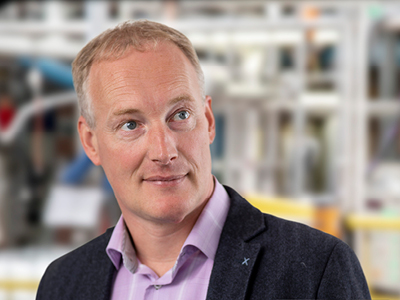There’s no such thing as the ultimate textile softener (or is there?)
Pretty much every piece of garment leaves the plant carrying a textile softener. It gives the fabric that nice touch so many customers are looking for and makes quite some stages of the production process run smoother. But customer desires are turning into demands. More and more people want great fabric handle combined with ten other product features. This causes problems, because there’s no such thing as the ultimate softener that can make all of this happen. Softeners are simply too dependent on too many different parameters. How can you, as a textile manufacturer, find your best option? Read on to find out.
The right textile softener is a multitasker
There are tons of reasons to use softeners and as a textile professional, you probably know them all. But let’s recap, just to be sure. First of all, softeners create a pleasant touch that convinces the customer to buy the garment when trying it on at the shop. Second, it makes the user feel more comfortable when wearing the garment, making him feel good about the purchase and feel more loyal to the brand. Third, softeners help to improve technological properties such as elasticity, sewability and tear-strength. In addition, they maintain hydrophilicity (if you add the right auxiliaries). During the production process, softeners help ejecting the heat from the needles, so they don’t damage the knit fabric. They’re also very helpful during raising and yarn re-winding.
If the best is not good enough
Despite their many qualities, customers, brands and textile manufacturers have an increasing number of requirements that softeners should live up to. This list includes easy handling, good compatibility to all sorts of textile auxiliaries, stability against high temperatures, no yellowing tendency, non-toxicity, no negative side effects, sprayable and harmless to people and the environment. And this is just the tip of the iceberg! Needless to say, there’s not a single softener on earth that lives up to all of them, explaining the wide range of softeners that’s available. So, how do you find the one (or ones) that tick all of your boxes? Let’s look at four important parameters you should take into account.
Parameter 1. Customer trends
Denim used to be just denim. People were used to the stiff fabric that was mostly purchased by workers that needed abrasion-resistant clothing for their long days at construction sites. Today, denim is an integral part of everyone’s wardrobe, and it comes in the shape of trousers, skirts and jackets. Trend or no trend; costumers no longer settle for looks only and want their denim to be soft and flexible, which is why textile manufacturers have started to add elastane and softeners. It’s only one of the many examples of customer-driven trends that made a huge difference in the textile plant. Our point is: what do your customers want your products to feel like?
Parameter 2. Softener selection
The fabrics you use have an enormous impact on the way your softener should be formulated. Hydrophilicity, flexibility or bulkiness (volume) for example, all differ depending on fibre type, yarn and fabric construction. They also depend on pre-treatment and dyeing processes applied before finishing, meaning that the softener you use should match all the specific demands per article. Second, there’s the electric charge/ionic character of the fabric and selected softener, which affects the affinity of the softener, and, in turn, influences the process to be used. Besides influencing the affinity of the softener towards the fabric, the ionic character and modification of the softener can impact yellowing behaviour during processing. Therefore, determine the required performances of your fabrics and adjust your softener and process accordingly.
Parameter 3. Production process
Apart from trends and fabric type, the way you produce your textiles is of great importance. There are softeners that are specifically developed for continuous and discontinuous processes and there are sprayable types. Everything has an impact, from temperature, pH conditions, applied sheer and water hardness to the way you clean the machines.
Let’s have a look at the main differences per production process:
- Continuous processing:
Auxiliaries are forced to the fabric, basically all softeners can be applied continuously. - Discontinuous processing:
Selection of textile auxiliaries (such as textile softeners) and process type is more specific and influences the affinity of the softener towards the fabric during the exhaustion process. - Spray application:
The diffusion rate of the softener into the construction of the treated textile depends on drying time and the amount of moisture on your fabric. A huge benefit is the energy saving as less energy is needed to dry the fabrics.
Parameter 4. Compatibility
In your search for the right textile softener, compatibility with other auxiliaries plays an important role too. Most of the time, manufacturers apply softeners to compensate the loss of flexibility or lack of softness after processing. No matter the quality of your softener; other products and auxiliaries can seriously meddle with the great handle you were after. Moreover, the smoothness that comes with softeners can also have a negative effect on the fabric, such as seam slippage. This means that you’ll need to always pre-check the effect the softener will have on your product, and which amount you need to avoid negative side effects.
Ultimate end product
It’s clear that there’s indeed no such thing as the ultimate softener. However, based on the application requirements and the preferences of the end customer regarding handle, you can create the ultimate end product. Therefore, carefully map the demands of the end-user and ask your chemical supplier to help you find the right combination of products for the best possible outcome! Want to learn more about your ultimate softener? Contact us to get more information!
 Sven Tijdeman
Sven Tijdeman
Business Development Manager





